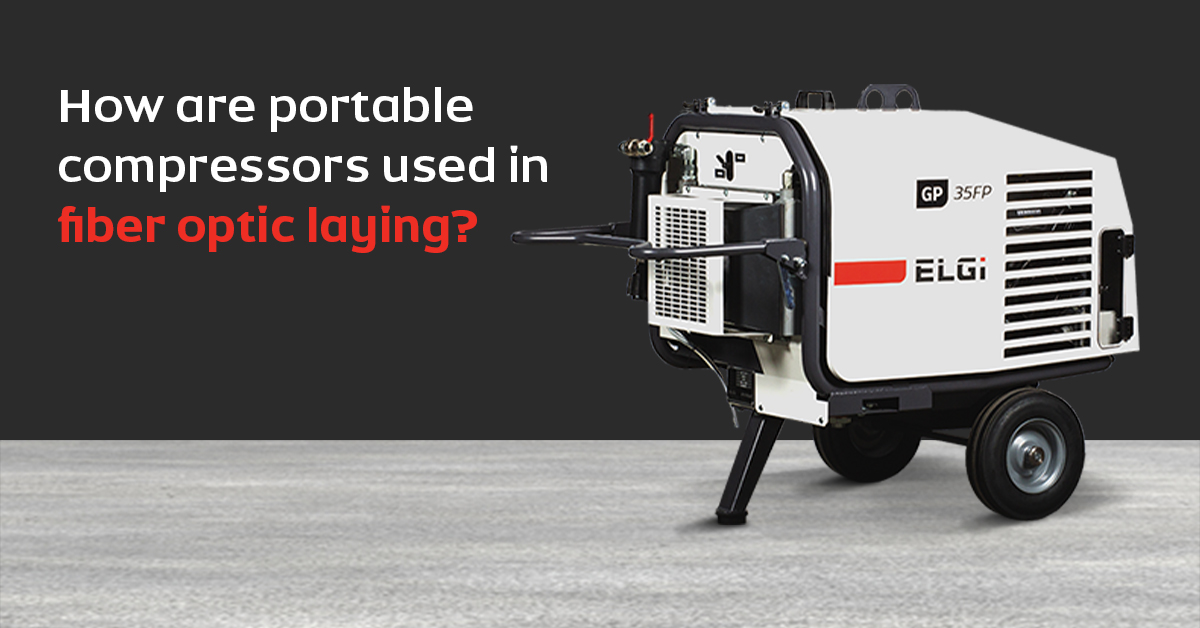How are portable compressors used in fiber optic laying?

The fiber optic laying industry is experiencing significant growth due to several factors that are driving the demand for high-speed, reliable data transmission. Government initiatives, digital transformation, increasing data consumption, and expansion of telecommunication networks have created a strong demand for fiber optic laying services. Fiber optic networks are becoming increasingly essential for supporting the digital economy, and as technology continues to advance, the industry is expected to experience further growth in the coming years.
Portable compressors play a crucial role in the growing fiber optic laying industry. These compressors are used for various tasks related to the installation and maintenance of fiber optic networks. Here are some ways in which portable air compressors are utilized in this industry:
Cable Blowing : Fiber optic cables are often blown into pre-installed ducts using compressed air. Portable compressors provide the necessary air pressure to facilitate the cable blowing process. Compressed air is injected into the duct, creating a cushion of air that enables the smooth and efficient installation of the fiber optic cable.
Cable Jetting : Similar to cable blowing, cable jetting involves the use of compressed air to install fiber optic cables. In this method, the cable is propelled through the duct by the force of compressed air. Portable compressors provide the required air pressure to jet the cable into place quickly and effectively.
Cable Testing : Fiber optic cables are often blown into pre-installed ducts using compressed air. Portable compressors provide the necessary air pressure to facilitate the cable blowing process. Compressed air is injected into the duct, creating a cushion of air that enables the smooth and efficient installation of the fiber optic cable.
Cable Splicing : Splicing is the process of joining two fiber optic cables together. It requires precise alignment and the use of specialized equipment. Portable compressors are utilized to power fusion splicers, which use compressed air to create a controlled environment for the splicing process. Compressed air helps to remove dust particles and maintain a clean splicing area, ensuring optimal splicing results.
Equipment Cleaning : Fiber optic laying involves the use of various tools and equipment, such as blowing machines, cable pushers, and duct cutters. These tools require regular cleaning and maintenance to ensure their proper functioning. Portable compressors are employed to blow away dust and debris from the equipment, keeping them clean and ready for use.
Site Preparation : Before laying fiber optic cables, the construction site needs to be prepared. Portable compressors are used to power pneumatic tools for tasks such as digging trenches, compacting soil, and removing obstacles. Compressed air-driven tools provide efficiency and versatility in site preparation activities
Piercing Tool Operations : Preparation for fiber optic installation includes creating a compact underground hole using piercing tools also known as “moles”. Portable compressors are used to operate piercing tools. The portable air compressor generates the air pressure required to drive the tool through various soil types.
ELGi Portable Compressors recently launched the ELGi GP35FP. The ELGi GP35FP is specifically designed and manufactured to meet the needs of the fiber optic cable-blowing industry. The GP35FP is highly maneuverable and easy to lift and transport. A skid option is available for installation on a utility truck or trailer. It is equipped with two integrated aftercoolers to reduce the approach temperature to 3.6°F over ambient and a moisture separator unit, immediately ready to work. It is powered by a Vanguard 23 HP gas engine with an electric start and uses an ELGi air end to produce 35 cfm at 218 psi. The ELGi GP35FP is a compact and reliable air compressor suitable for the specific needs of the fiber optic installation sector. To learn more, visit: https://www.elgi.com/us/portable-compressor-gp-35fp/

